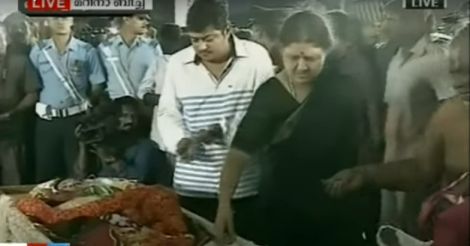Chennai: The burial of Tamil Nadu chief minister J. Jayalalithaa's body instead of cremating it as per rituals of the Iyengar community she belonged to, had raised questions but experts say it is an "integral part of Dravidian culture".
And there are precedents in the case of leading Dravidian leaders, including those of her own AIADMK.
"Burial is an integral part of Dravidian culture," Ramu Manivannan, professor of political science at the University of Madras, told IANS.
He also cited the ancient practice of preserving the aged dead in big urns.
Bodies of leaders like DMK founder and former chief minister C.N.Annadurai and AIADMK founder M.G. Ramachandran (MGR) - the political mentor of Jayalalithaa - were buried at the Marina Beach and memorials for them have come up there.
AIADMK members, who are not atheists but believers, do not see Jayalalithaa as an Iyengar but their 'Amma' (mother) and beyond any caste or religion.
Incidentally Jayalalithaa's relatives did not raise any objection to the burial as along with Sasikala, a once close confidante, Jaya's nephew Deepak Jayakumar performed the last rituals.
The traditional practice in Hinduism is to cremate the body of a dead person, but burial is used for holy men, saints and children below the age of three. In many Hindu communities, the body of a holy person is buried in the 'Padmasana' (lotus position).
Hindus believe that burning the body to destroy it, helps the departed soul get over any residual attachment it may have developed for the deceased person.
Holy men and saints are, however, believed to have attained a level of detachment that makes cremation unnecessary, while for children, it is considered that the soul has not stayed in the body long enough to develop any attachment.
(With agency inputs)
























 Jayalalithaa's close aide Sasikala and nephew Deepak Jayakumar perform her last rituals.
Jayalalithaa's close aide Sasikala and nephew Deepak Jayakumar perform her last rituals.